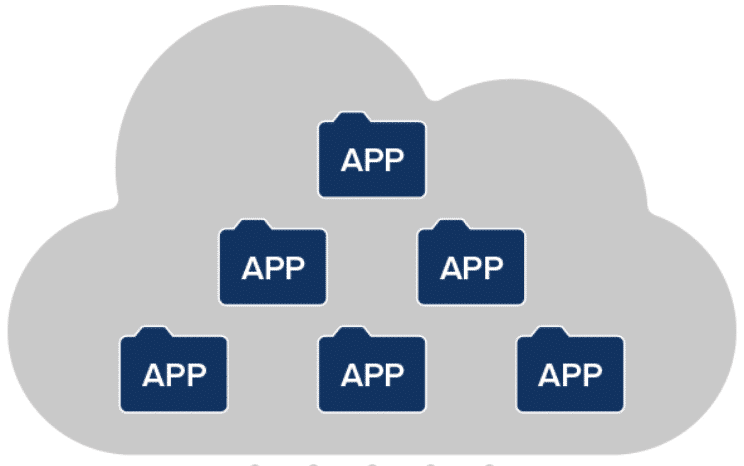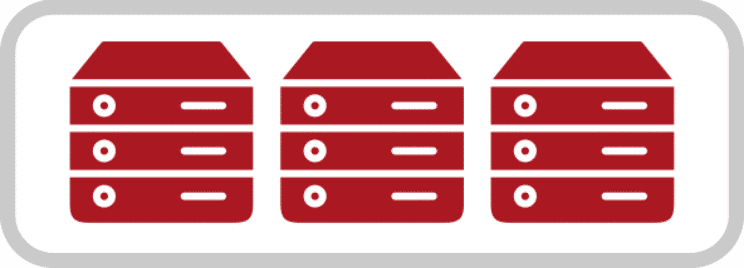Why Stratum Matters for Mobile Network Operators
As telecom networks evolve toward 5G, cloud-native infrastructure, and disaggregated architectures, data management becomes increasingly complex. Operators now face the challenge of handling data across a growing mix of environments—from core and edge to enterprise and private networks.
Stratum solves this by providing a unified Network Data Layer that decouples applications from their data. This enables stateless applications, accelerates time to market for new services, and ensures secure, scalable access to structured and unstructured data across any hybrid or multi-vendor environment.
Stratum Network Data Layer empowers operators to:
- Accelerate cloud-native adoption without vendor lock-in.
- Simplify data management across functions, layers, and locations.
- Secure the full data lifecycle, from schema to encrypted communication.
- Deliver low-latency services at scale—from core to edge to private 5G.
- Reduce TCO by avoiding data duplication and using COTS infrastructure.
What does Stratum do?
Stratum Network Data Layer was built ground up to avoid vendor lock in and managing stateless data. Stateless applications means faster scalability and better service availability, at lower costs. Store all the data in Stratum, scale on demand with assured 6 Nines of data availability.
Key Enhancements for Your Mobile Network
Stratum is the result of two decades of experience delivering ultra-reliable data solutions to global Tier 1 operators. With Stratum, Mobile Network Operators gain:
- Unmatched performance: 1-2ms read time / 3-5ms write time latency and 100% uptime
- True data ownership: Full control over models, policies, and access
- Simplified operations: A single, unified data layer for all services, applications, and vendors.
- Service agility: Rapid deployment of new use cases, network slices, and enterprise apps online
- Cost savings: Fewer per app data silos, automated coordination of data across distributed network
Capabilities of Stratum Network Data Layer
Stateless Applications with Reliable, Centralized Data
Stratum allows 4G and 5G applications to offload their state, enabling stateless operation. This increases service availability and simplifies scaling. Applications interact with Stratum via secure, open APIs, accessing only the data they need when they need it.
With “six nines” (99.9999%) availability and millisecond-level read/write latency, Stratum ensures uninterrupted performance in distributed environments.
Full Lifecycle Management for Structured and Unstructured Data
Stratum supports both:
- Structured Data (UDR/SPR): Subscriber, device, identity, and policy data managed via a secure, high-performance repository.
- Unstructured Data (UDSF): Session, location, usage, and authentication vectors stored and shared dynamically using 3GPP-standard interfaces.
This allows CSPs to store, replicate, and distribute all critical data types across hybrid clouds and edge environments, using one common layer.
True Cloud-Native, Open Architecture
Built from the ground up for containerized, microservice environments, Stratum supports hybrid deployments across public, private, and edge clouds. It integrates easily with orchestration platforms and network functions using RESTful APIs and standardized data models.
Whether scaling to billions of IoT devices or supporting enterprise slices, Stratum’s distributed architecture adapts to the needs of modern telecom.
Flexible Replication and Data Placement
Stratum gives operators complete control over how and where data is stored. Choose synchronous, asynchronous, or hybrid replication strategies depending on latency, performance, and availability requirements.
Data can be made available at the edge—without replicating the entire dataset—supporting enterprise, slicing, and private 5G use cases with localized context and selective synchronization to the core.
Unique Benefits for Mobile Network Operators
Open, Standard-Based Integration
Stratum supports integration via REST, LDAP, DIAMETER, SNMP, and 3GPP-defined interfaces (Rel 16). This enables fast onboarding of new network functions and external applications while maintaining compliance with industry standards.
Built-In Security and Data Privacy
Stratum secures the data lifecycle with:
- Encrypted communication and data at rest.
- Fine-grained access control via data views and attributes.
- Safe multi-tenant support for hybrid cloud and distributed deployments.
Operators maintain ownership and control of their schema, adapting models and permissions independently.
Application-Agnostic, Schema-Centric Design
Stratum eliminates vendor-specific data silos by decoupling the data from the applications. Operators can customize data models and create virtual schemas to serve different use cases—without changing the underlying data store.
The result is a reusable, unified data layer that simplifies operations and enables innovation.
Full Toolset for Migration, Provisioning, and Modelling
Stratum includes:
- Data modelling tools for customized schema creation.
- Provisioning and configuration APIs.
- Built-in migration support to move from legacy storage systems with minimal disruption.
This helps operators evolve their infrastructure at their own pace, integrating legacy and modern systems into a cohesive framework.
Event-Driven Data for Smarter Networks
Stratum supports event subscriptions on data changes—from individual attributes to full records—enabling responsive, event-driven applications. Network functions can react instantly to policy changes or session updates, reducing the need for constant polling and improving efficiency.
Use Cases that Drive Growth
Stratum is purpose-built to support the data needs of tomorrow’s networks. It enables:
- Private 5G Networks: Deploy lightweight edge nodes with only the required data replicated locally. Enable secure, low-latency data access for enterprises, factories, and campuses.
- Network Slicing: Create isolated, policy-driven data views per slice. Control access by service type, SLA, or enterprise customer.
- IoT Scale-Out: Manage millions of devices and sessions dynamically, with elastic scale across the core and edge. Use attribute-based access to isolate critical sensor data.
- Edge-Optimized Services: Only replicate what’s needed. Deliver context-aware apps at the edge—no need to sync massive datasets.
- Vendor-Independent Function Hosting: Unify data access across 3GPP-compliant VNFs and CNFs from multiple vendors. Accelerate onboarding of new applications or network functions.
Latest Insights On UDR / Network Data layer
Want to explore more?
Structured Data, Unstructured Data & Private 5G/IoT use cases
Look beyond Into how a data layer can enable your applications to transform into a cloud native environment.

Resources
Product Datasheet
The Importance Of Distributed Data Platforms For 5G
Your Data Platform will make or break your 5G network, learn about the rise of the new Distributed Data Architectures
Secrets Of Data Management
Managing operator data in the 5G core with unique insights from industry analysts at Heavy Reading and Strategy Analytics
Specifications and Standards Compliance
Stratum complies with leading industry standards, including:
3GPP: 23.335, 23.501, 23.845, 29.335, 29.500, 29.504, 29.505, 29.519, 29.571, 29.808, 29.935, 32.181, 32.182
IETF: LDAP (RFC 4511–4519, 4522, 4523), REST/JSON (RFC 7540, 8259), DIAMETER (RFC 6733), SNMP (RFC 3410–3417, 3584, 3826)
Certification with Oracle Cloud Infrastructure (OCI)
Stratum has been certified to run on Oracle Cloud Infrastructure (OCI), enabling telecom operators to deploy cloud-native 5G solutions with ease. The certification ensures that Stratum integrates seamlessly with Oracle’s cloud infrastructure, providing:
- Automated Onboarding: Simplified deployment with automated Day 0 and Day 1 activities, saving time and resources.
- Performance Validation: Extensive performance testing ensures Stratum can handle high transaction volumes and complex network operations.
- Scalable and Cost-Effective: Optimize resource allocation and scale your infrastructure on demand, ensuring cost-efficiency in dynamic environments.
Stratum’s integration with OCI enables mobile network operators to rapidly scale their operations with a production-grade cloud environment that supports 5G and beyond.
Contact Our Experts
Future-Proof Your Network Data
Stratum isn’t just a data store—it’s the foundation for modern, dynamic, vendor-neutral telecom environments. By centralizing data and decoupling it from the control plane and applications, Stratum simplifies operations, enables innovation, and prepares your network for what’s next.
Would you like to know what Stratum can accomplish in your network? Schedule a meeting with our experts.










